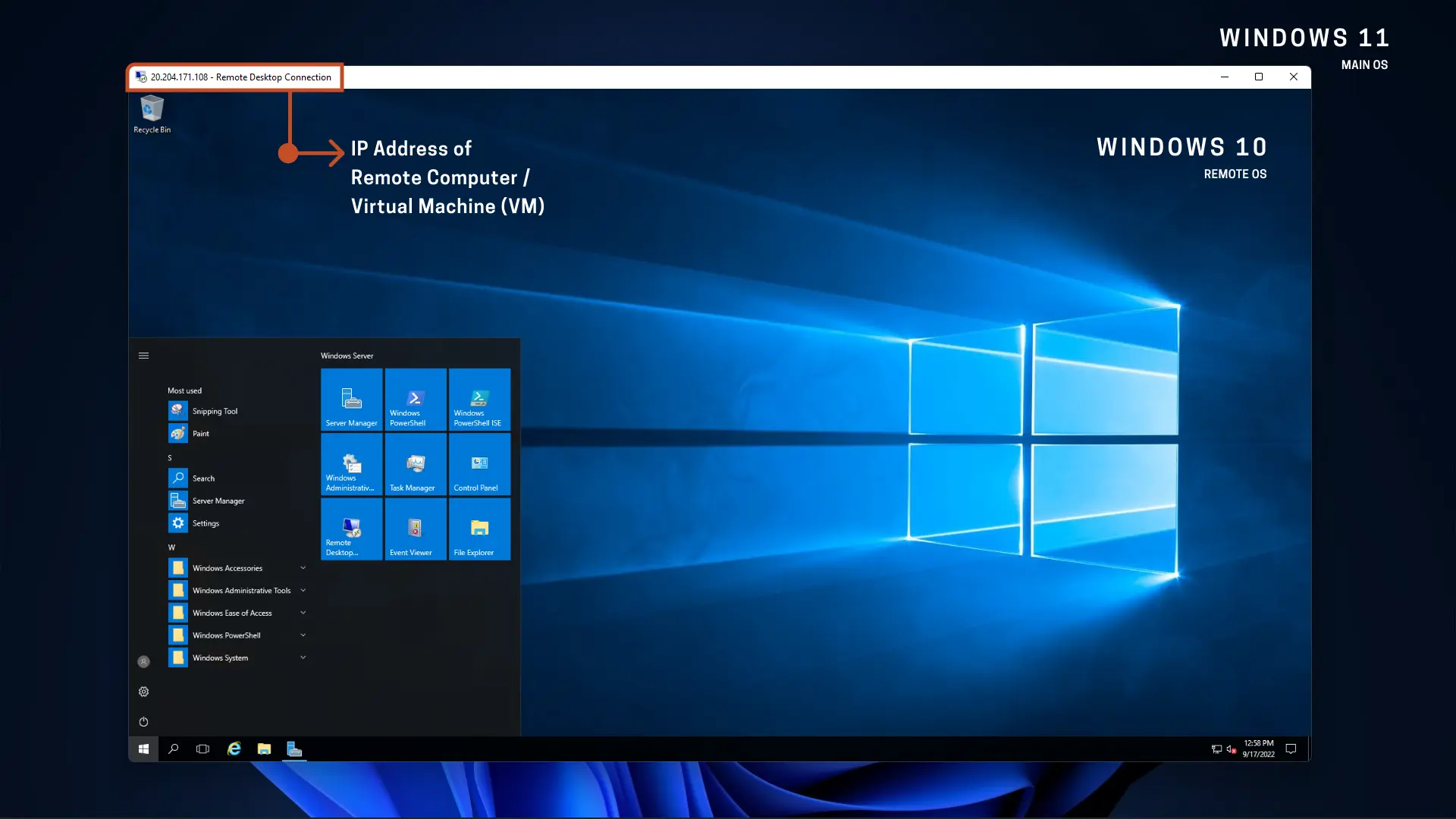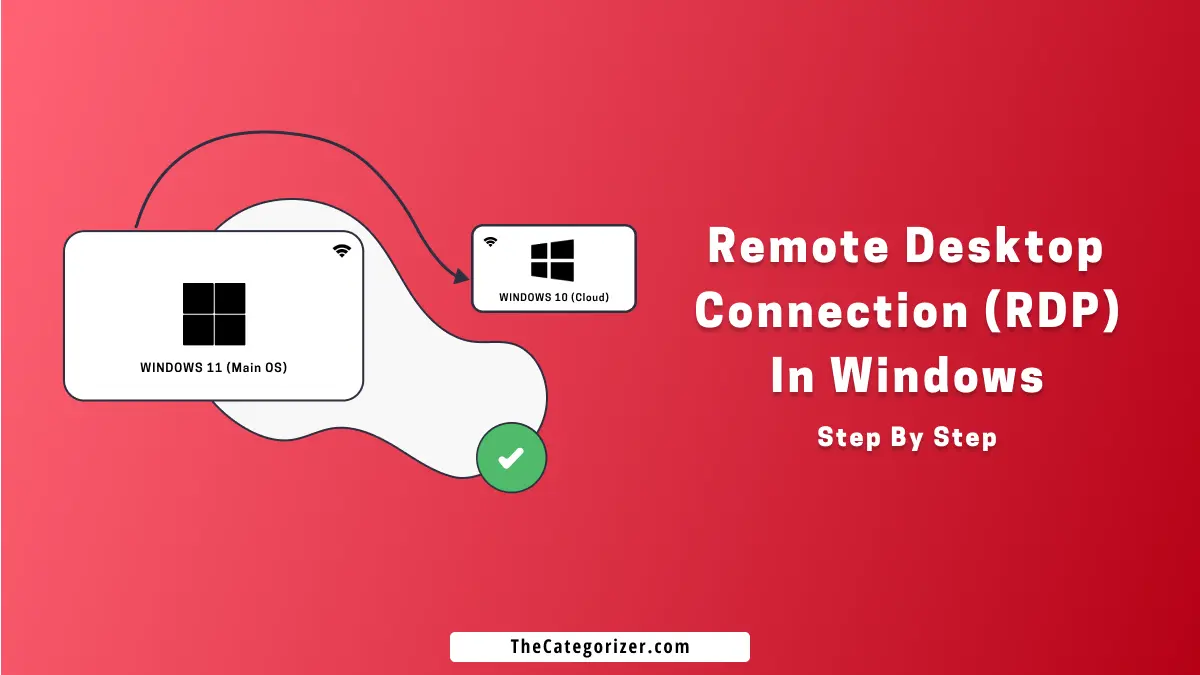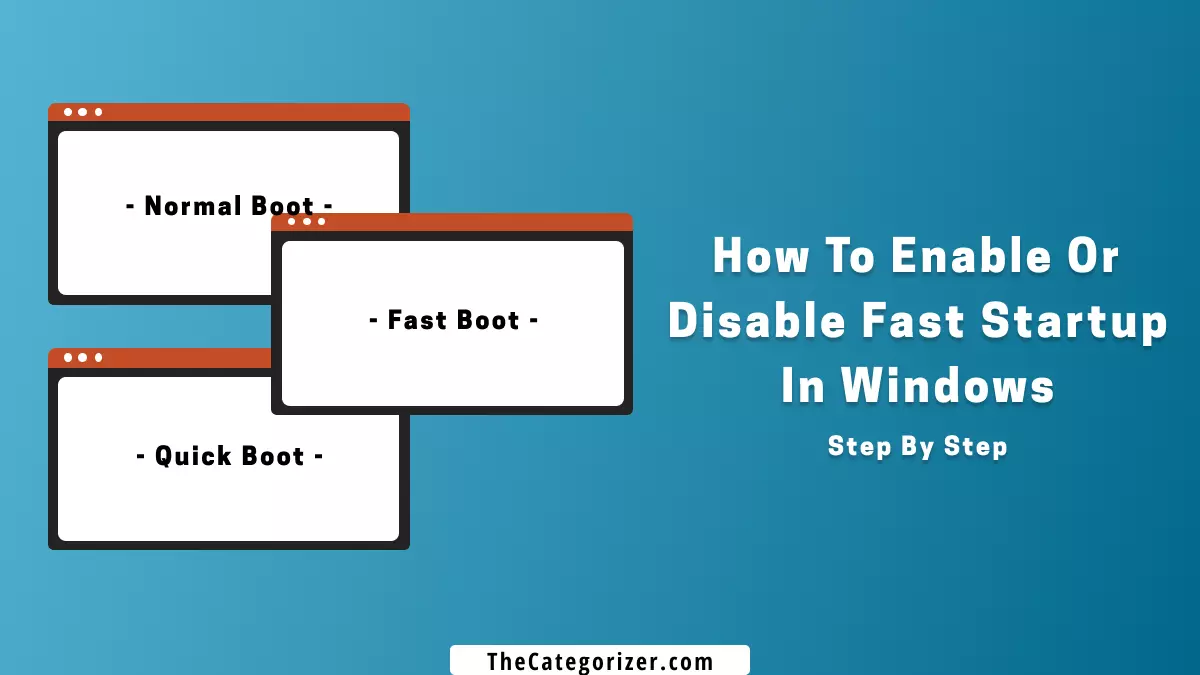Overview – Remote Desktop Connection
Remote Desktop Connection is a feature in Windows that allows you to connect to another computer over the internet without requiring external software or special hardware, but a fast internet connection for a smoother experience.
It seems that you’re a system administrator opting for a remote desktop connection to manage different computers on the network or you’re simply exploring the Windows capabilities.

Let’s break down what we’re going to cover in this article:
Prerequisites: Remote Desktop Connection in Windows
- Ensure both computers (local computer or virtual machine) are connected to the internet and the public IP Address is accessible.
- Ensure “Remote Connections” are accepted on your computer (covered in the next section).
Suggested Article: Find IP Address in Windows.
Enable Remote Desktop Connection in Windows
Note: To connect to remote desktops, it’s mandatory to enable remote connection in Windows. To do so, you can follow any one of the steps below.
1. Using Windows Settings
Step 1: Open the Windows Settings from the Start menu or press the “Windows logo key + I” key combination on the keyboard.
Step 2: In the “System” tab, click the “Remote Desktop” option.

Step 3: Toggle on the “Remote Desktop” button to enable Remote Desktop Connection service in Windows.

NOTE: If the “Remote Desktop” toggle button is unavailable, this means your version of Windows doesn’t support Remote Desktop Connections.
2. Using Advanced System Settings
Step 1: In the Start Menu, search for “View Advanced System Settings” (without quotation marks) and hit the enter key.
Step 2: In the “Remote” tab, check the “Allow Remote Connections to this computer” and click the “Apply” button.

NOTE: If the “Allow Remote Connections to this computer” option is unavailable, this means your version of Windows doesn’t support Remote Desktop Connections.
Configure and Connect Remote Desktop in Windows
1. Using IP Address, Username, and Password (Manually)
Step 1: In the Start menu, search for “Remote Desktop Connection” (without quotation marks) and open it or run the Command Prompt from the Start menu, type the “MSTSC” command (without quotation marks) and hit the enter key.
Step 2: In the computer name section, input the Public IP Address and Username of the Virtual Machine. If you’re connecting to the local computer, input its IP Address and its username.

Step 3: Enter the “Password” for the account that you entered in the previous step.

Step 4: Click the “Yes” button to connect, even if the identity of the remote computer couldn’t be verified. (if applicable)

NOTE: Once the credentials are verified, the Virtual Machine OS will be loaded in the Remote Desktop Window.
2. Using a Pre-Built RDP File (Virtual Machine)
Step 1: Download the RDP (Remote Desktop Protocol) File of the Virtual Machine from the Cloud Provider.

Step 2: Double-click the recently downloaded RDP File and click the “Connect” button.


Step 3: Click the “More Choices” button.

Step 4: Click the “Use different account” option. Enter the “Username” and “Password” for Virtual Machine’s username on the IP and click the “OK” button.

NOTE: Once the credentials are verified, the Virtual Machine OS will be loaded in the Remote Desktop Window.
3. Using Pre-Built RDP File (Upload RDP File for Virtual Machine)
Step 1: In the Start menu, search for “Remote Desktop Connection” (without quotation marks) and open it or run the Command Prompt from the start menu, type the “MSTSC” command (without quotation marks) and hit the enter key.
Step 2: Click the “Show Options” buttons.

Step 3: Click the “Open” button, choose the location, and select the RDP File to load it.


Step 4: Enter the “Password” for Virtual Machine’s username on the IP and click the “OK” button.

Step 5: Click the “Yes” button to connect, even if the identity of the remote computer couldn’t be verified. (if applicable)

NOTE: Once the credentials are verified, the Virtual Machine OS will be loaded in the Remote Desktop Window.
4. Using Command Prompt/PowerShell
Step 1: Open the Command Prompt from the Start menu.
Step 2: To connect a remote computer/cloud virtual machine (VM), type the following command: mstsc /v:IP-ADDRESS-OF-REMOTE-COMPUTER.

Replace the “IP-ADDRESS-OF-REMOTE-COMPUTER” with the actual Public IP Address of the remote computer.
Example: mstsc /v:XX.235.103.228
Step 3: Enter the “Password” for Virtual Machine’s username on the IP and click the “OK” button.

Step 4: Click the “Yes” button to connect, even if the identity of the remote computer couldn’t be verified. (if applicable)

NOTE: Once the credentials are verified, the Virtual Machine OS will be loaded in the Remote Desktop Window.
Next Steps
We’ve covered how to enable and use the remote desktop connection to connect to another computer over the internet in Windows 11.
After going through this article, we can consider that remote desktop connection is an excellent solution for system administrators and IT specialists to remotely control computers connected to their network, as well as for individuals who want remote access to their home computers when they are away from their residences or not carrying their laptops.
Further, Improve your device’s overall network connectivity by following the related articles below.
Related Articles
Install and Use Connect App in Windows 11
Learn how to connect your phone to Windows using the built-in Connect App in Windows and Cast feature in Phones.
How To Find Computer Name in Windows 11
Find the name by which your computer is visible to other devices over Bluetooth, Hotspot, etc.
Rename Computer Name in Windows 11
Did you set the computer name in a hurry while setting up the Windows? Learn how to rename the computer using the built-in Windows settings.





